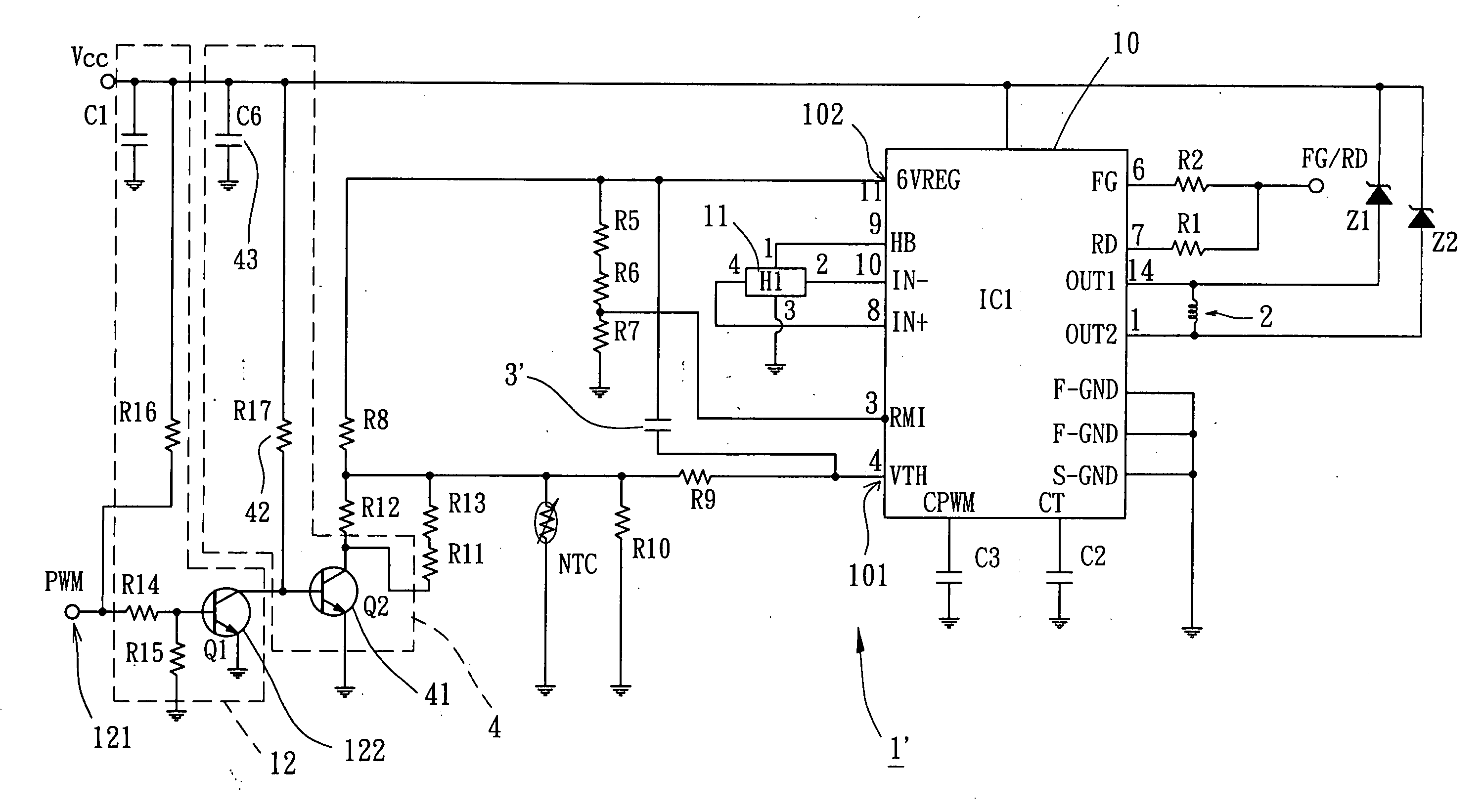Frequency-variable pulse-width-modulation motor drive circuit capable of operating under different pwm frequencies
a technology of pulse width and motor drive, which is applied in the direction of motor/generator/converter stopper, electronic commutator, dynamo-electric converter control, etc., can solve the problem of unnecessarily operating at full speed of the motor, generating an increased amount of air noise and vibration, and unable to achieve greater operational heat dissipation effect, etc. problem, to achieve the effect of improving the waveform
- Summary
- Abstract
- Description
- Claims
- Application Information
AI Technical Summary
Benefits of technology
Problems solved by technology
Method used
Image
Examples
Embodiment Construction
[0033] Turning now to FIG. 4, a schematic circuitry diagram illustrating a frequency-variable PWM motor drive circuit in accordance with a preferred embodiment of the present invention is provided. It should be understood that reference numerals of the PWM motor drive circuit of the preferred embodiment of the present invention have applied the identical numerals of the conventional PWM motor drive circuit, as shown in FIG. 1.
[0034] Still referring to FIG. 4, the frequency-variable PWM motor drive circuit 1′ electrically connects with a motor coil 2 so as to carry out alternatively magnetizing the motor coil 2. In a preferred embodiment, the motor coil 2 can be selected from a group consisting of a single-phase coil, a double-phase coil and a three-phase coil. Typically, the frequency-variable PWM motor drive circuit 1′ includes a drive IC member 10, a Hall IC member 11, a PWM converter circuit 12, at least one capacitor 3′ and a compensation unit 4. In operation, the frequency-var...
PUM
 Login to View More
Login to View More Abstract
Description
Claims
Application Information
 Login to View More
Login to View More - R&D
- Intellectual Property
- Life Sciences
- Materials
- Tech Scout
- Unparalleled Data Quality
- Higher Quality Content
- 60% Fewer Hallucinations
Browse by: Latest US Patents, China's latest patents, Technical Efficacy Thesaurus, Application Domain, Technology Topic, Popular Technical Reports.
© 2025 PatSnap. All rights reserved.Legal|Privacy policy|Modern Slavery Act Transparency Statement|Sitemap|About US| Contact US: help@patsnap.com



